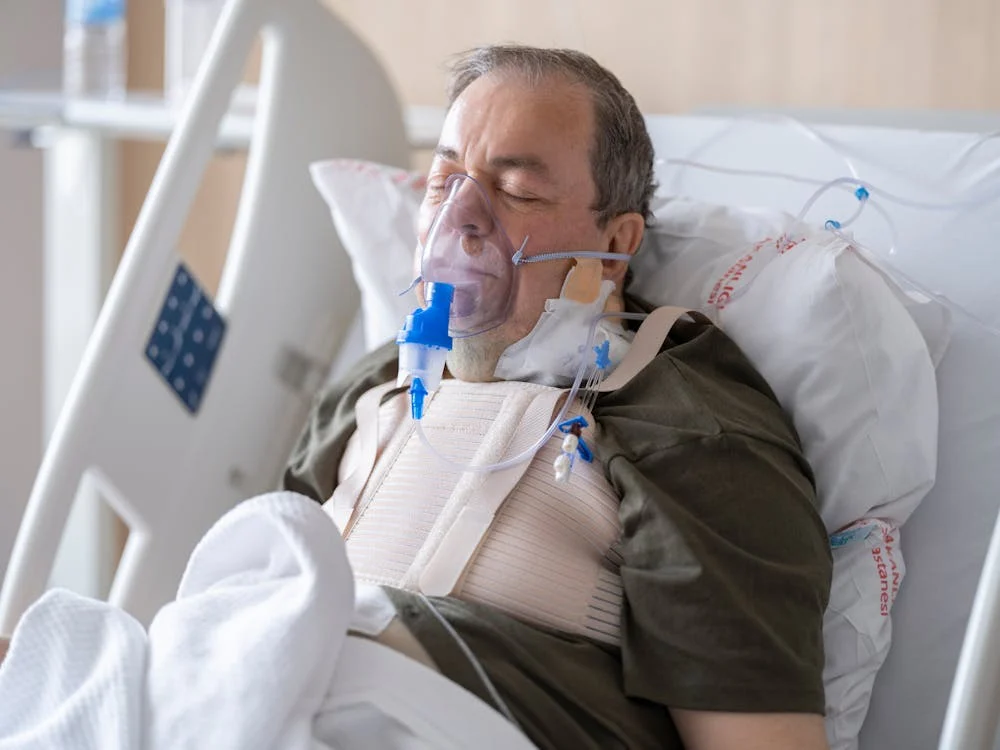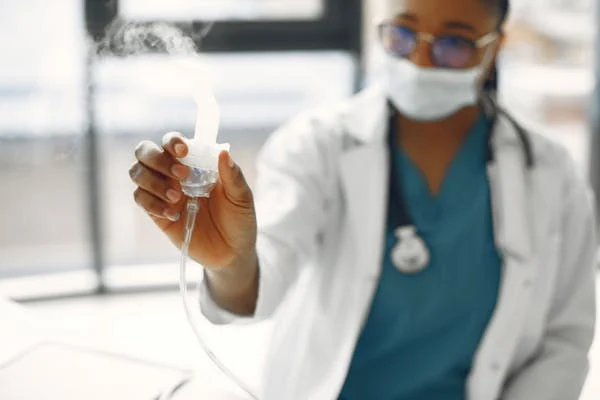Recombinant human follicle-stimulating hormone Gonal f (Follitropin alfa) is used to treat both male and female infertility. It is used to induce spermatogenesis in males and ovulation in females.
Gonal f (Follitropin alfa) Uses:
-
Multifollicular development during Assisted Reproductive Technology (ART):
- Used in ART to encourage the growth of many follicles
-
Ovulation induction:
- Pregnancy induction in oligo anovulatory infertile patients whose infertility is functional rather than due to primary ovarian failure
-
Spermatogenesis induction (Gonal-f only):
- Men with primary and secondary hypogonadotropic hypogonadism whose infertility isn't caused by main testicular failure can have their spermatogenesis induced.
Gonal f (Follitropin alfa) Dose in Adults
Note:
- Individual needs should guide the dosage.
- Use the lowest dose necessary to achieve the desired effects.
- Depending on how each patient responds, doses may change throughout the course of treatment.
Gonal f (Follitropin alfa) Dose in Ovulation induction:
-
Females:
- SubQ:
- Initial: 75 units daily;
- After 14 days, incremental dose modifications of up to 37.5 units may be taken into consideration; if necessary, more dose increases of the same magnitude can be done every weak (maximum dose: 300 units in a day).
- The course of treatment should be continued until appropriate ovarian response is shown by follicular growth and/or blood estradiol levels.
- A day after the final dosage of follitropin, hCG is administered to induce final oocyte maturation and ovulation if the follitropin response was appropriate.
- if serum estradiol is greater than 2000 pg/mL, withhold hCG;
- Stop if stomach pain persists or if the ovaries are excessively swollen.
- SubQ:
Gonal f (Follitropin alfa) Dose in the Multifollicular development during ART:
-
Females:
- SubQ:
- Follitropin alfa therapy should be started in the early follicular phase (cycle day 2 or day 3), with daily doses of 150 units until enough follicular development is achieved.
- Most of the time, therapy shouldn't go longer than 10 days.
- Follitropin alfa should be started at a dose of 225 units per day in patients aged 35 or older whose endogenous gonadotropin levels are suppressed.
- Continue receiving medication until ultrasonography in conjunction with the determination of serum estradiol levels reveals appropriate follicular growth.
- Depending on the patient's response, recommend dose modifications after five days; modify the subsequent dosage by an additional 75 to 150 units every three to five days.
- Doses more than 450 units daily are not required.
- Induce ultimate follicular maturation using hCG to prepare for oocyte retrieval after sufficient follicular development is visible.
- If the ovaries are unusually swollen, stop taking hCG.
- SubQ:
Gonal f (Follitropin alfa) Dose in the Spermatogenesis induction:
-
Males:
- Gonal-f:
- SubQ: The recommended course of treatment is to start with hCG pretreatment until blood testosterone levels are within the normal range, at which point Gonal-f at 150 units should be started.
- continue with the smallest dose required to induce spermatogenesis (maximum dose: 300 units thrice in a weak);
- may be given for up to 18 months
- Gonal-f:
Use in Children:
Not indicated.
Gonal f (Follitropin alfa) Pregnancy Risk Category: X
- There have been reports of multiple births, spontaneous abortions, ectopic pregnancies, and congenital anomalies.
- After ART, congenital defects can be more frequent than naturally occurring pregnancy.
- This might be brought on by parental traits (maternal and sperm characteristics)
- Women who are pregnant or nearing the end of their pregnancy should not use this medication.
- Follitropin alfa is used to induce ovulation.
Follitropin alfa use during breastfeeding:
- It is unknown if breast milk contains follitropin alfa.
- There is a risk of serious adverse reactions in nursing babies. It is important to decide whether to stop nursing or stop using the drug.
Gonal f (Follitropin alfa) Dose in Kidney Disease:
The manufacturer's labelling does not mention dosage adjustments (has not been studied).
Gonal f (Follitropin alfa) Dose in Liver disease:
There is no dosage adjustment provided in the manufacturer's labeling (has not been studied).
Common Side Effects of Gonal f (Follitropin alfa):
-
Cardiovascular:
- Varicocele
-
Central Nervous System:
- Headache
-
Dermatologic:
- Acne Vulgaris
-
Endocrine & Metabolic:
- Ovarian Cyst
-
Gastrointestinal:
- Abdominal Pain
- Nausea
- Enlargement Of Abdomen
-
Genitourinary:
- Mastalgia
-
Local:
- Injection Site Reaction
-
Respiratory:
- Upper Respiratory Tract Infection
Less Common Side Effects Of Gonal f (Follitropin alfa):
-
Cardiovascular:
- Chest Pain
- Hypotension
- Palpitations
-
Central Nervous System:
- Fatigue
- Pain
- Emotional Lability
- Migraine
- Dizziness
- Malaise
- Anxiety
- Drowsiness
- Nervousness
- Paresthesia
-
Dermatologic:
- Acne Vulgaris
- Pruritus
-
Endocrine & Metabolic:
- Gynecomastia
- Intermenstrual Bleeding
- Ovarian Hyperstimulation Syndrome
- Weight Gain
- Menstrual Disease
- Hot Flash
- Ovarian Disease
- Increased Thirst
-
Gastrointestinal:
- Diarrhea
- Flatulence
- Toothache
- Vomiting
- Aphthous Stomatitis
- Constipation
- Dyspepsia
- Anorexia
-
Genitourinary:
- Pelvic Pain
- Mastalgia
- Vaginal Hemorrhage
- Cervical Lesion
- Genital Candidiasis
- Dysmenorrhea
- Cystitis
- Gynecological Pain
- Urinary Frequency
- Urinary Tract Infection
- Uterine Hemorrhage
- Leukorrhea
-
Infection:
- Viral Infection
-
Local:
- Bruising At Injection Site
- Pain At Injection Site
- Inflammation At Injection Site
- Swelling At Injection Site
-
Neuromuscular & Skeletal:
- Back Pain
- Myalgia
-
Respiratory:
- Rhinitis
- Pharyngitis
- Sinusitis
- Flu-Like Symptoms
- Cough
- Asthma
- Dyspnea
-
Miscellaneous:
- Fever
Contraindications to Gonal f (Follitropin alfa):
- Sex hormone-based cancers of the reproductive tract or accessory organs
- High levels of FSH can indicate primary gonadal dysfunction (ovarian or testicular).
- Hypersensitivity to any component of the formula or follitropins;
- Undetermined cause of abnormal uterine bleeding
- Intracranial lesions (eg pituitary and hypothalamus tumors);
- Uncontrolled adrenal, thyroid, or pituitary dysfunction
- ovarian cysts and enlargements of undetermined origin that are not caused by polycystic Ovarian Syndrome;
- pregnancy
Warnings and precautions
-
Abortion
- Gonadotropins can increase the risk of spontaneous abortion.
- It has not been proven that causality exists.
-
Ectopic pregnancy
- Women with tubal abnormalities may be at greater risk of ectopic pregnancy. Early confirmation with hCG testing or transvaginal ultrasound is essential to confirm intrauterine pregnancy.
-
Hypersensitivity
- Reports of severe hypersensitivity reactions, including anaphylaxis, have been made. Stop using the medication and get treatment.
-
Ovarian enlargement:
- Abdominal pain or distention may be present in conjunction with this illness. It happens in about 20% of patients receiving urofollitropin or hCG treatment and often regresses within two to three weeks.
- Withhold hCG if the ovaries are unusually big on the final day to lessen the effects of ovarian hyperstimulation syndrome (OHSS).
-
Ovarian hyperstimulation syndrome (OHSS):
- OHSS can be a rare, exaggerated reaction to ovulation-induction therapy.
- It can begin as soon as the treatment is completed, but it may get worse within 7-10 days.
- Abdominal distention/pain, diarrhoea, nausea, and/or vomiting are all potential signs of mild or moderate OHSS.
- Severe OHSS symptoms may include severe nausea/vomiting (intractable), anuria/oliguria ascites, significant dyspnea or hypotension, as well as severe abdominal discomfort.
- You may also experience decreased hemoconcentration, hypoproteinemia and creatinine clearance.
- Stop using gonadotropins.
- Analgesia, management of fluid and electrolyte balance, management of pain, and avoidance of thromboembolic consequences all fall under the umbrella of supportive care.
-
Ovarian neoplasms
- Malignant and benign neoplasms have sporadically been identified in women who have received various medications for regulated ovarian stimulation.
- However, the causal relationship has not been established.
-
Ovarian torsion
- Following gonadotropin therapy, this syndrome has been documented. It could be brought on by OHSS, polycystic ovaries, past or present ovarian cysts, or pregnancy.
-
Effects on the pulmonary system:
- A rapid detorsion and early identification can lessen the severity of ovarian issues.
- Serious lung diseases include acute respiratory distress syndrome, exacerbation, and atelectasis have been reported.
-
Events that are thromboembolic:
- Ovarian hyperstimulation Syndrome is not the only condition associated with thromboembolic events that have been identified (OHSS).
Monitoring parameters:
- Maintain adequate follicular development.
- The endometrial lining and ovaries can be seen sonographically to directly assess this, or blood estradiol levels can be checked.
- Monitoring the size and development of follicles and timing the delivery of hCG can both be done using ultrasonography and the measurement of estradiol levels.
- Therefore, it should only be used in conjunction with more precise estimates of follicular development. The clinical evaluation of estrogenic activity (changes in vaginal cytology and changes in the appearance and volume of cervical mucus) provides an indirect estimate of the estrogenic effect upon the target organs (ultrasonography and serum estradiol determinations).
- By using sonographic evidence, direct and indirect indicators of progesterone production, or both, it is possible to acquire clinical confirmation of ovulation.
Most generally used indices of progesterone production are:
- Menstruation occurs after a rise in basal body temperature, a rise in urine or serum luteinizing hormone (LH), a rise in serum progesterone, and a rise in basal body temperature.
The indices of sonographic evidence of ovulation include:
- Follicle collapse, cul-de-sac fluid, corpus luteum formation characteristics, or secretory endometrium
- Following hCG administration, observe for at least two weeks for OHSS symptoms and signs.
OHSS:
- Cardiorespiratory status, electrolytes, fluid balance, abdominal circumference, albumin hematocrit, haemoglobin, serum creatinine, urine specific gravity, vital signs, urine output, weight (daily or as required), and liver enzymes should all be monitored for patients who are in hospitals (weekly).
Spermatogenesis:
- Monitor serum testosterone levels and sperm count.
How to administer Gonal f (Follitropin alfa)?
SubQ:
- Dispense SubQ. Use the calibrated syringes supplied by the manufacturer to deliver the medication found in multidose vials of Gonal-f or Gonal-f RFF.
- If there are any bubbles, let them settle before administering. To prevent pain from the cold injection, give Gonal-f RFF Rediject at least 30 minutes to warm up to room temperature before using it.
- Other medications should not be mixed inside the Gonal-f RFF Rediject device.
Mechanism of action of Gonal f (Follitropin alfa):
- Follitropin is the trade name for Follitropin alfa, a human FSH preparation derived from recombinant DNA.
- Follitropins increase spermatogenesis in men with hypogonadotropic hypogonadism and ovarian growth in women who do not have primary ovarian failure.
- FSH is essential for healthy spermatogenesis, gonadal steroid synthesis, follicular maturation, and development.
The onset of action: Peak effect:
- Spermatogenesis, median: 6.8 to 12.4 months (range 2.7-18.1 months)
- Follicle development: Within the cycle
Absorption: SubQ:
- Absorption rate is slower than the elimination rate
Bioavailability:
- ~66 percent to 76 percent in healthy female volunteers;
- 10 percent in vitro fertilization/embryo transfer patients
Half-life elimination:
- SubQ: 24 to 53 hours in healthy female volunteers;
- 32 to 41 hours in healthy male volunteers
Time to peak: In healthy volunteers:
- Females: SubQ: 8 to 16 hours
- Males: SubQ: 11 to 20 hours
International Brand Names of Follitropin alfa:
- Gonal-f
- Gonal-f RFF
- Gonal-f RFF Rediject
- Gonal-f Pen
- Bemfola
- Forielle
- Gonal-F
- Gonalef
- Ovaleap
Follitropin alfa Brand Names in Pakistan:
Follitropin Alfa Injection 75 IU |
|
| Follitrin | Excel Healthcare Laboratories (Pvt.) Ltd. |
Follitropin Alfa Injection 75 IU |
|
| Gonal F | Merck Private Ltd. |




 Injection.webp)